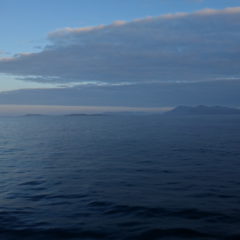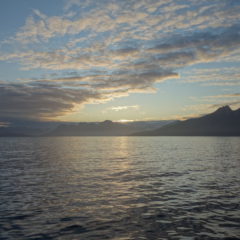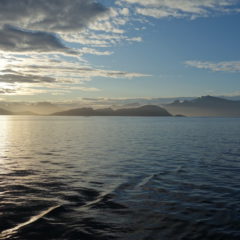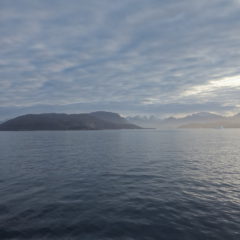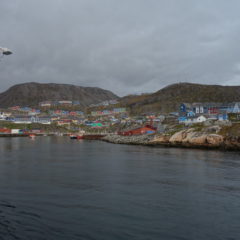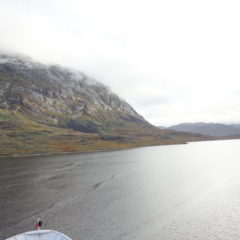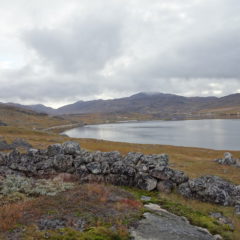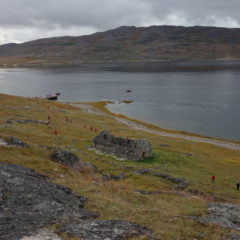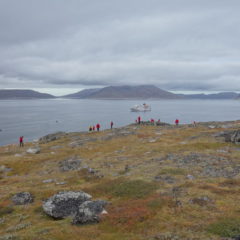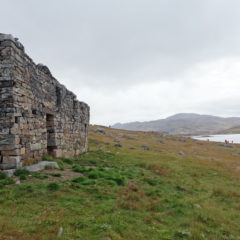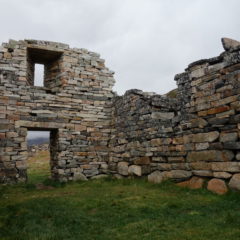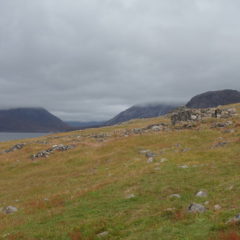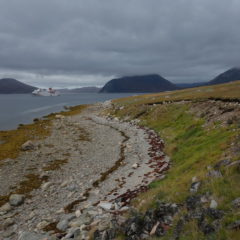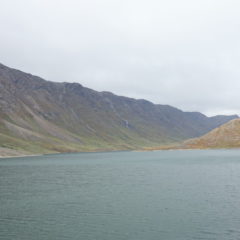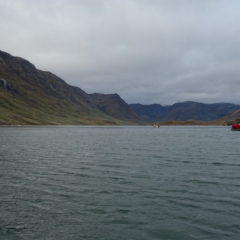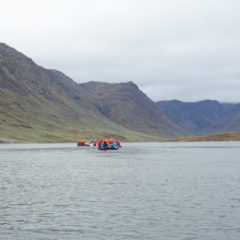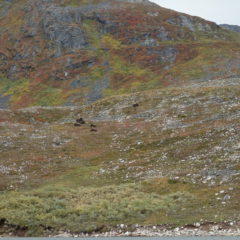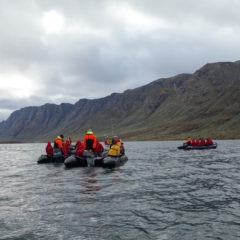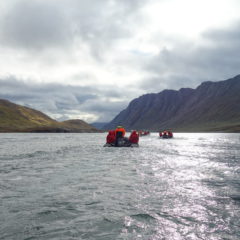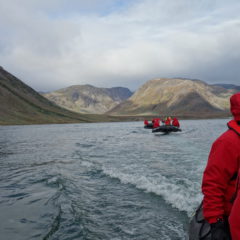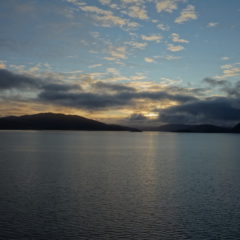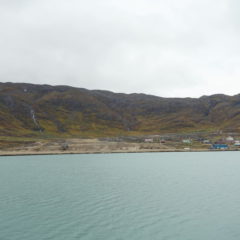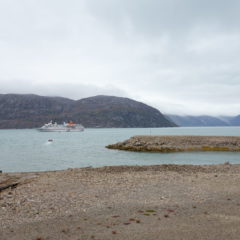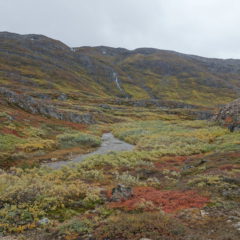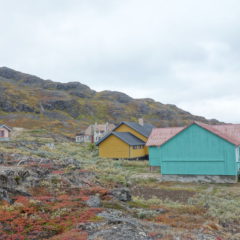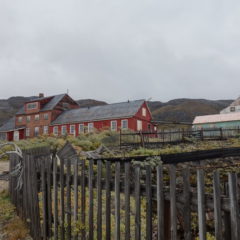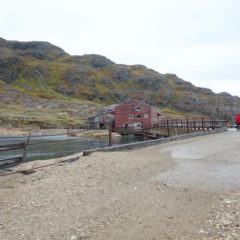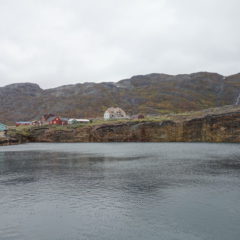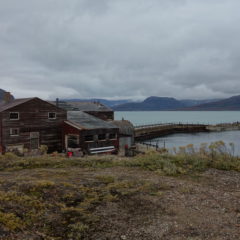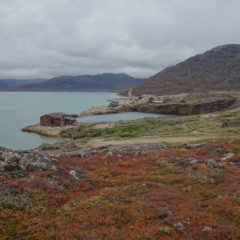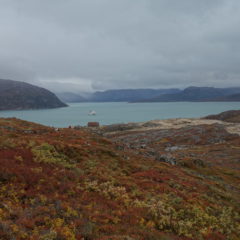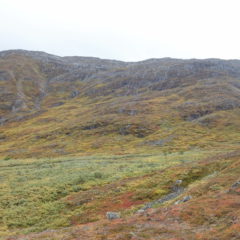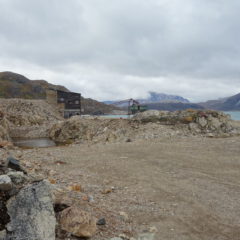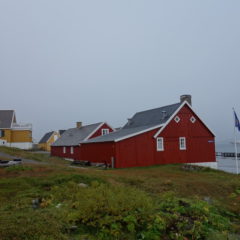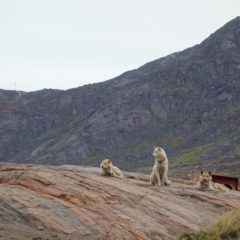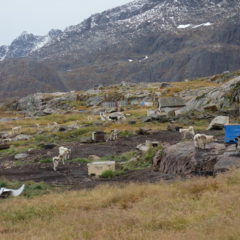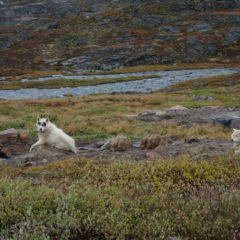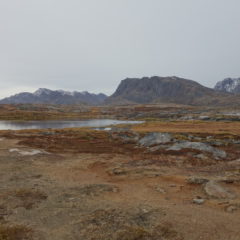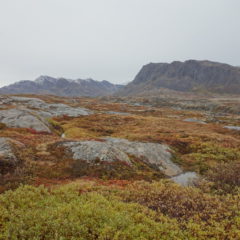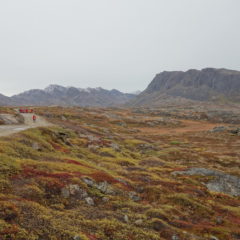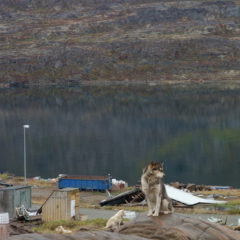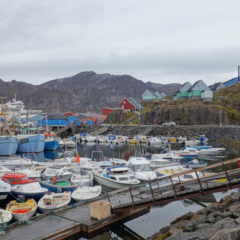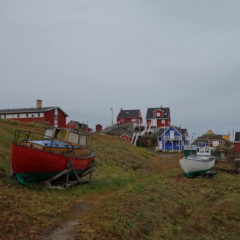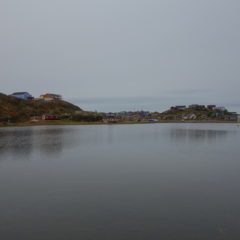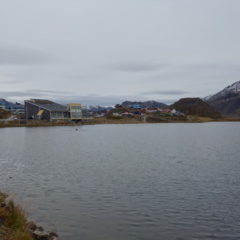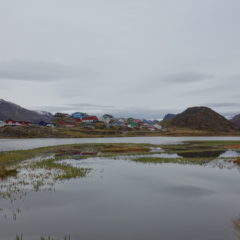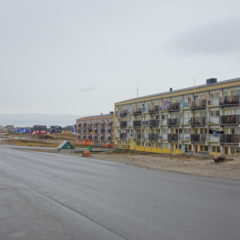After the visit to the former cryolite mine of Ivittuut this morning, another interesting mineral was waiting for us this afternoon – ikaite, also dubbed as the melting mineral – as it decomposes into calcite and water once the temperature reaches around 8°C / 46°F.
The mineral had first been discovered in a fjord close to the Ivittuut mine – the Ikka fjord (hence the mineral’s name ikaite). In that fjord – under water – towers of that mineral of 10 meters and more can be found.
During lunch the ship had moved over to the Ikka fjord, where a local ranger boat was already waiting for us. Hanseatic had to stay outside the area with the ikaite, so zodiacs were prepared and then boarded.
Following the ranger boat an armada of about ten zodiacs made it into the ikaite area. Most eyes were now fixed on the water, aiming to see one of the towers at an expected meter underneath the surface. There was no luck here – with the water still murky from the storm some days back. Also it did not help, that we did the zodiac trip during high tide – the top ends of the columns must have been like a good two meters away from the surface – so bad luck, when combined with with the murkiness of the water.
Nature however did compensate for that – and threw in a load of musk oxen, as well as a brace of sea eagles.
